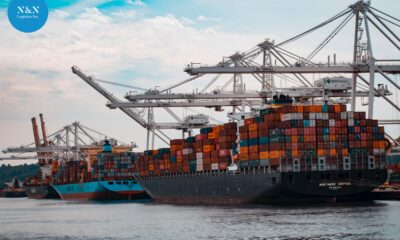Transportation
How Does Supply Chain Management Help Companies Increase Profits?

In business, supply chain management, which includes the transportation and storage of goods between locations and companies, and has the entire process and movement of raw material, work-in-production, and finished products, is known as the supply chain. It also involves functions like quality control, packaging, shipping, and inventory. The term ‘supply chain’ is more often used than the term ‘demand chain.’ The supply chain Management refers to the sequence of events that occur from the origination of a product to its ultimate destination
Stages in Supply chain Management
There are four stages in supply chain management; planning, sourcing, production, and logistics. The preplanning stage involves collecting information and initiating activities to identify and plan for the product or service supply. This may include collecting requirements from suppliers of raw material, components, labor, and technology used in production, preparing financial estimates, determining risks, setting up financial plans, analyzing competition, testing designs and performance, and finally negotiating deals with suppliers and other parties involved. This planning stage helps in identifying the sources of supply for the final product. Analysis of supply needs, current market conditions, demand, prices, and technicalities like payments methods and delivery times are analyzed to set up a supply plan.
Once a detailed plan is in place for supply, it is necessary to identify the roles and responsibilities of each individual or team in supply chain management. Each team in the supply chain management should have a specific task and responsibility. Each individual should know his or her role and should be accountable for fulfilling those duties. These responsibilities include planning, sourcing, production, processing, storing, and finalizing the goods for delivery.
Logistics or Transportation
Another function of supply chain management is logistics or transporting raw goods from the source to the ultimate destination. This transportation may take place through air, land, or sea. Companies use several kinds of transport means to facilitate logistics processes, including trucks, airplanes, railroads, pipelines, marine railways, etc. The transport logistics need to ensure that the final destination of the products is reached and on time.
Materializing
One of the tasks in supply chain management is materializing raw materials needed in production. By using available resources, manufacturers can achieve cost savings. They can also minimize the transportation costs by reusing some of the existing goods in their inventory. One example of reusing items is by converting waste oil into fuel for the car.
Every step in supply chain management requires automation to ensure smooth operations. By automating the supply chain management process, companies eliminate the risk of human errors and mistakes. These errors usually occur when human fails to perform required steps in the process of producing the goods. Automation helps in reducing such risks.
Importance of time
Supply chain management also ensures the timely arrival of goods on the market. In today’s competitive world, time is a significant factor that affects the ability to deliver goods on time. Automation facilitates integrating sales and marketing, accounting, and product order processing to improve the power of a company to sell its products and services. It is used for complex supply chains that include assembly of finished goods and for distributing goods. Apart from speeding up the delivery process, it improves its profitability by reducing over and above costs.
Automation
Automation enables companies to monitor their entire supply chain management process, including product development, supplier selection, and production and shipping. Supply chain management software enables companies to determine where to source raw materials and at what quantity to purchase them. The software can also determine how many units of a particular good should be produced and store them until they are sold. This means that a company can get an accurate picture of its entire supply chain at any given time. A strong and effective supply chain management system increases a company’s overall profitability. It reduces Transport and Logistics costs and eliminates waste, enabling the company to offer better services and to increase profit.
-

 Business6 days ago
Business6 days agoS&P 500 Soars in Best May in Decades Amid Tariff Relief and Nvidia’s Surge
-

 Immigration6 days ago
Immigration6 days agoTrump’s Immigration Crackdown: Legal Battles and Policy Shifts
-

 Business6 days ago
Business6 days agoUS Stock Market Soars in May Amidst Tariff Tensions and Inflation Worries
-

 Government6 days ago
Government6 days agoTrump Administration’s Government Reshaping Efforts Face Criticism and Legal Battles
-

 Business6 days ago
Business6 days agoTrump’s Tariffs: A Global Economic Reckoning
-

 Foreign Policy4 days ago
Foreign Policy4 days agoInside Schedule F: Will Trump’s Federal Workforce Shake-Up Undermine Democracy?
-

 Press Release3 days ago
Press Release3 days agoIn2space Launches Campaign to Make Space Travel Accessible for All



















